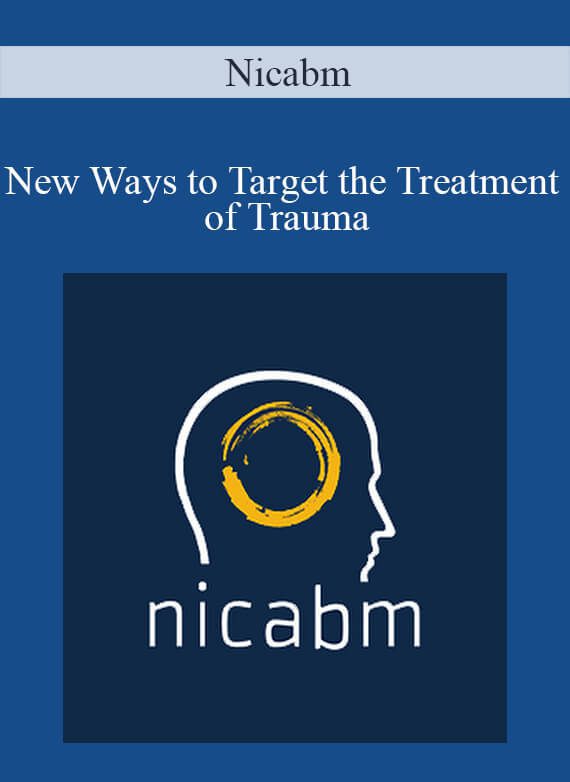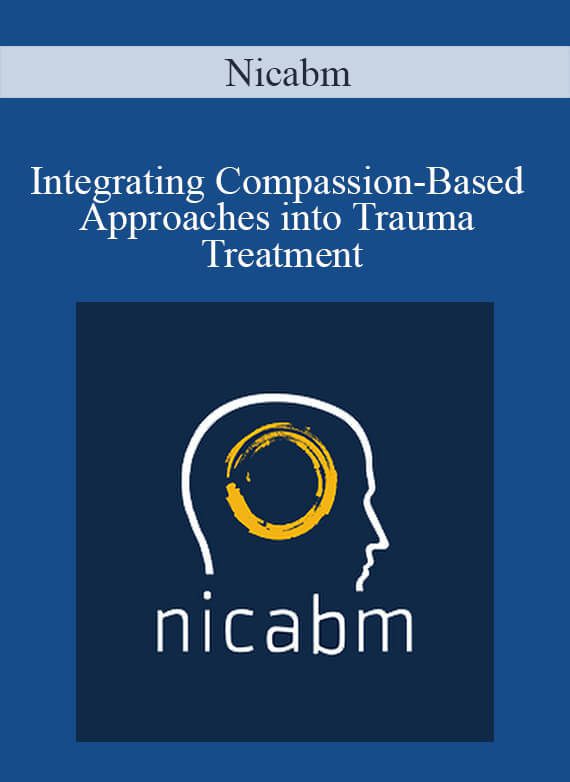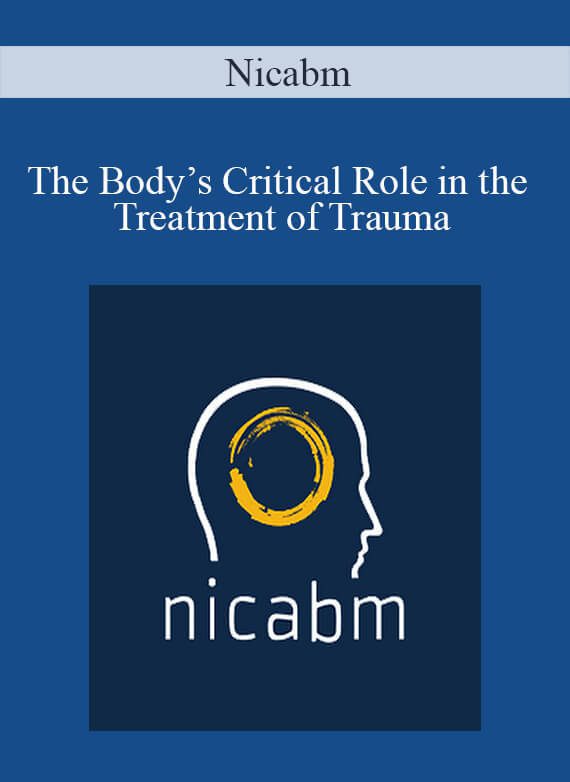[Download Now] Nicabm – Integrating Compassion-Based Approaches into Trauma Treatment
$197.00 Original price was: $197.00.$50.00Current price is: $50.00.
[Download Now] Nicabm – Integrating Compassion-Based Approaches into Trauma Treatment
Product Delivery: You will receive a download link via your order email immediately
Should you have any question, do not hesitate to contact us: [email protected]
[Download Now] Nicabm – Integrating Compassion-Based Approaches into Trauma Treatment
PLEASE CHECK ALL CONTENTS HERE:
Sale Page_https://www.nicabm.com/program/trauma-compassion/?del=store
Archive: https://archive.fo/QICWX
Unlock Healing for Trauma Patients with Compassion-Based Therapy
Working with trauma is some of the toughest work we do, both on us as practitioners and our patients.
But compassion-based therapies can enhance your interventions and support your clients through the difficult work of processing trauma.
Research suggests that compassion practice can act as a buffer against the harmful effects of trauma. It can help your client develop skills to approach traumatic memories without getting caught up in a threat response during your session.
Compassion practices can even equip your clients to repair ruptures following inadequate childhood attachment.
So how do we integrate compassion-oriented therapies into treatment and build a client’s capacity to process trauma?
We turned to the world’s leading experts in compassion-based therapy and asked them to share their best approaches for working with trauma.
Expert Strategies for Integrating Compassion-Based Approaches into Trauma Treatment
How to Build Your Client’s Capacity for Compassion (and Why That Can Help Them Process Trauma)
Deborah Lee, DClinPsy Christopher Willard, PsyD
Christopher Germer, PhD Emiliana Simon-Thomas, PhD
Susan Pollak, MTS, EdD Kristin Neff, PhD
- The Dramatic Impact of Self-Compassion on PTSD
- Why Compassion-Based Approaches Are So Effective for Helping Patients Process Trauma
- What to Do When Early Childhood Trauma Has Compromised Your Patient’s Ability to Practice Self-Compassion
- How to Help Patients Cultivate Self-Compassion to Repair Attachment Ruptures
- A Powerful Metaphor to Help Patients Open Up to Self-Compassion After Trauma
Three Key Steps for Integrating Compassion-Based Approaches into the Treatment of Trauma
Dennis Tirch, PhD Deborah Lee, DClinPsy
Laura Silberstein-Tirch, PsyD
- Crucial Steps You Must Take Before Applying Compassion-Oriented Approaches to Your Patient’s Traumatic Memories
- How to Use Compassionate Mind Training to Heal a Traumatized Brain
- How to Help Your Patient Bring Compassion to Traumatic Memories
- The Game-Changing Power of Identifying “Safety Strategies” That Are Harming Your Client’s Relationships
How to Integrate Self-Compassion into the Three Stages of Trauma Treatment
Christopher Germer, PhD Susan Pollak, MTS, EdD
- Why Compassion Can Be So Effective in Helping Clients Reconnect with the World
- How Compassion Can Build Your Client’s Internal Resources and Their Capacity for Processing Trauma
Strategies to Help Patients When Trauma Creates Blocks to Compassion
Kristin Neff, PhD Christopher Germer, PhD
Laura Silberstein-Tirch, PsyD Jack Kornfield, PhD
Christopher Willard, PsyD Dennis Tirch, PhD
- How to Use Your Patient’s Blocks and Fears to Build Compassion-Based Skills
- Two Key Phrases for Working with “Backdraft” in Self-Compassion
- How Compassion Can Cultivate Courage and Accelerate Post-Traumatic Growth
- How to Use Compassion as Motivation for Transformation
Critical Insights: Integrating Compassion into the Treatment of Trauma
Kelly McGonigal, PhD Ron Siegel, PsyD Ruth Buczynski, PhD
- The Role Oxytocin Can Play When Integrating Compassion into Trauma Work
- Why Some Patients Experience a “Vulnerability Hangover” After Compassion Practice – and How to Mitigate It
- The Key Factor That Can Make Self-Compassion Sustainable for Patients Who Have Experienced Trauma
- Compassion-Based Practices to Help Patients Feel Safe and Accepted
- Specific De-Shaming Language to Normalize a Client’s Response to Trauma
Concrete Compassion-Based Strategies for Addressing Trauma (and How to Integrate Them into Your Work)
Rick Hanson, PhD Deborah Lee, DClinPsy Ashley Vigil-Otero, PhD
- Self-Compassion Skills Patients Can Use to Create a Sense of Safety
- Practical Exercises That Can Bring Compassion to Your Patient’s Trauma Story
- Two Specific Ways to Use Psychoeducation to Help Patients Process Traumatic Memories
- How to Apply Compassionate Imagery to Help Patients Create an Internal Support System
- Three Key Compassion-Based Ways to Help Patients Expand Their Window of Tolerance
Here’s What You’ll Get:
Everything is yours to keep forever in your professional library
| Downloadable videos so you can watch at your convenience, on any device | |
| Audio recordings you can download and listen to at home, in the car, at the gym or wherever you like | |
| TalkBack Segments to distill key ideas (this is where we “land” the session) | |
| Next Week in Your Practice sessions to give you concrete strategies to use with patients | |
| Professionally-formatted transcripts of the sessions, to make review and action simple | |
| Four downloadable bonus videos to help you apply compassion more effectively to trauma therapy |
Delivery Method
– After your purchase, you’ll see a View your orders link which goes to the Downloads page. Here, you can download all the files associated with your order.
– Downloads are available once your payment is confirmed, we’ll also send you a download notification email separate from any transaction notification emails you receive from IMC.sale.
– Since it is a digital copy, our suggestion is to download and save it to your hard drive. In case the link is broken for any reason, please contact us and we will resend the new download link.
– If you cannot find the download link, please don’t worry about that. We will update and notify you as soon as possible at 8:00 AM – 8:00 PM (UTC+8).
Thank You For Shopping With Us!
Be the first to review “[Download Now] Nicabm – Integrating Compassion-Based Approaches into Trauma Treatment” Cancel reply
Related Products
Medical & Health
Medical & Health
[Download Now] Nicabm – New Ways to Target the Treatment of Trauma
Medical & Health
Medical & Health
Nicabm – The Body’s Critical Role in the Treatment of Trauma

![[Download Now] Nicabm - New Ways to Target the Treatment of Trauma](https://imc.sale/wp-content/uploads/2022/02/Nicabm-New-Ways-to-Target-the-Treatment-of-Trauma-1-100x100.jpg)
![[Download Now] Nicabm - The Body's Critical Role in the Treatment of Trauma](https://imc.sale/wp-content/uploads/2022/02/Nicabm-The-Bodys-Critical-Role-in-the-Treatment-of-Trauma-100x100.jpg)
![[Download Now] Nicabm - Integrating Compassion-Based Approaches into Trauma Treatment](https://imc.sale/wp-content/uploads/2022/02/Nicabm-Integrating-Compassion-Based-Approaches-into-Trauma-Treatment.jpg)
![[Download Now] Nicabm - The Advanced Master Program on the Treatment of Trauma](https://imc.sale/wp-content/uploads/2022/02/Nicabm-The-Advanced-Master-Program-on-the-Treatment-of-Trauma.jpg)
![[Download Now] Nicabm - Rethinking Trauma](https://imc.sale/wp-content/uploads/2022/02/Nicabm-Rethinking-Trauma.jpg)
![[Download Now] Nicabm - The Body's Critical Role in the Treatment of Trauma](https://imc.sale/wp-content/uploads/2022/02/Nicabm-The-Bodys-Critical-Role-in-the-Treatment-of-Trauma.jpg)
![[Download Now] Nicabm - New Ways to Target the Treatment of Trauma](https://imc.sale/wp-content/uploads/2022/02/Nicabm-New-Ways-to-Target-the-Treatment-of-Trauma-1.jpg)
![[Download Now] Nicabm - Expert Strategies for Working with Impostor Syndrome](https://imc.sale/wp-content/uploads/2022/02/Nicabm-Expert-Strategies-for-Working-with-Impostor-Syndrome.jpg)



![[Download Now] Nicabm - Integrating Compassion-Based Approaches into Trauma Treatment](https://imc.sale/wp-content/uploads/2022/02/Nicabm-Integrating-Compassion-Based-Approaches-into-Trauma-Treatment-100x100.jpg)
5 reviews for [Download Now] Nicabm – Integrating Compassion-Based Approaches into Trauma Treatment
There are no reviews yet.